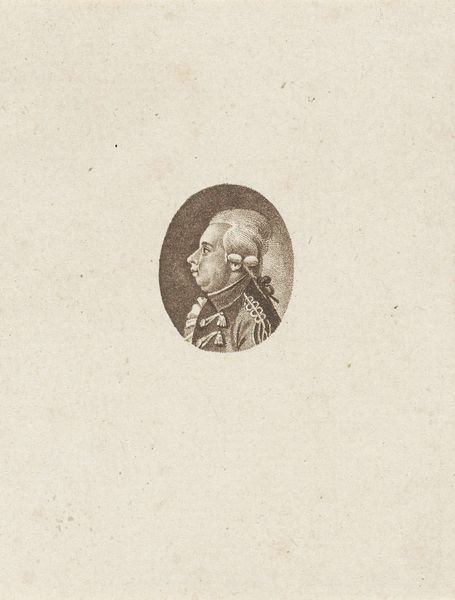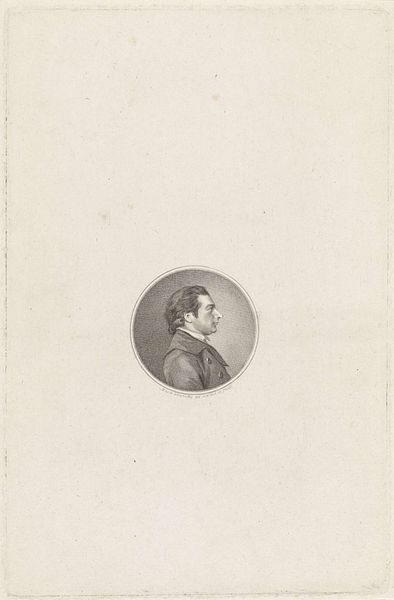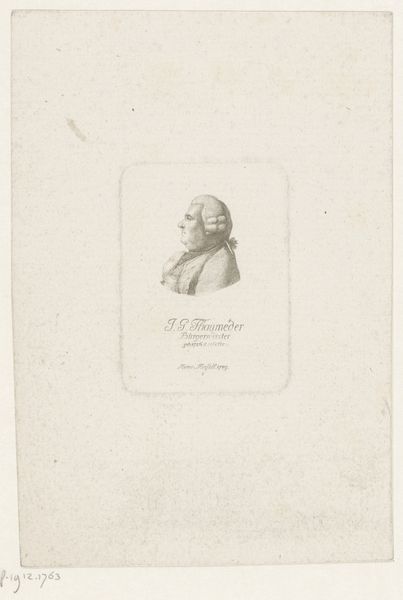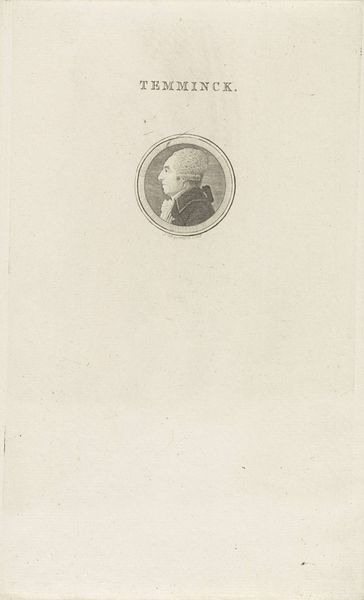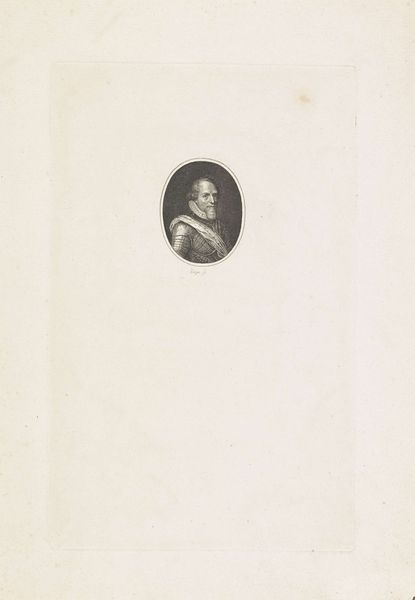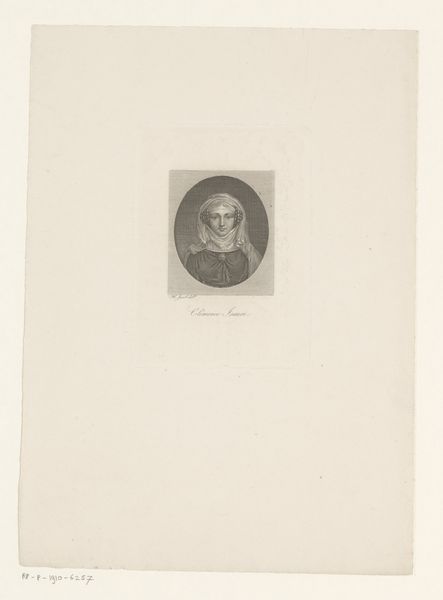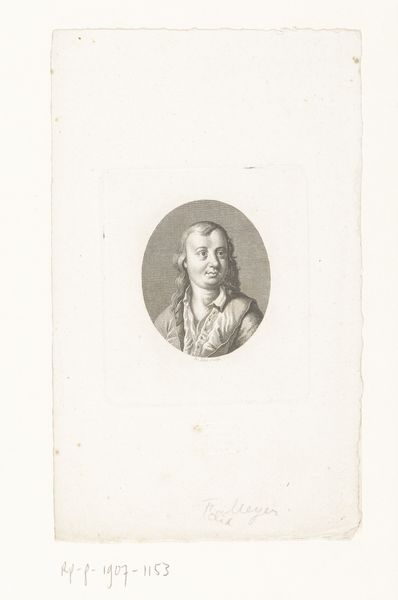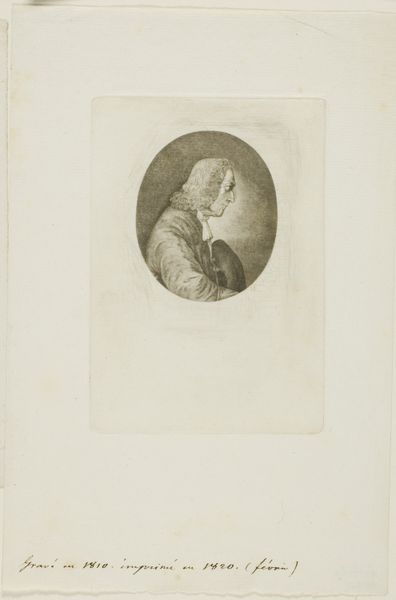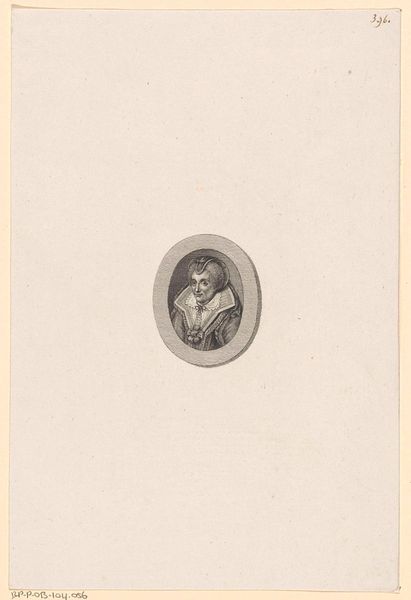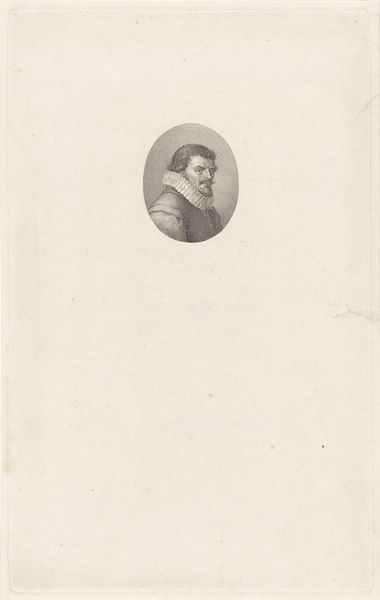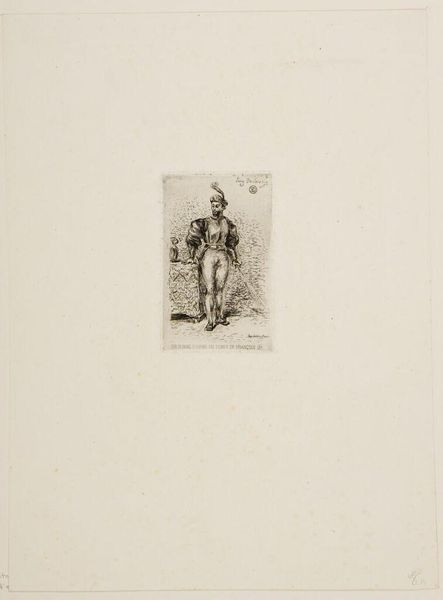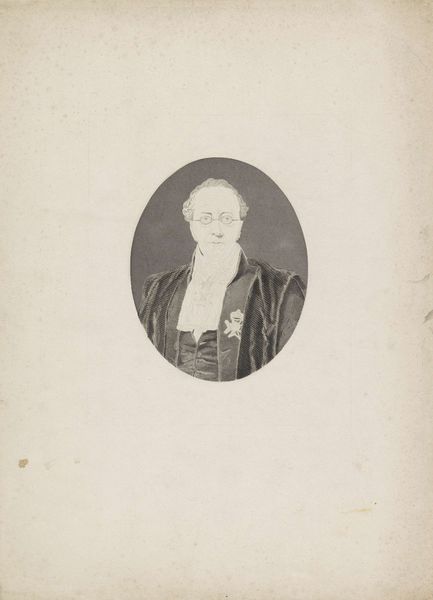
print, engraving
#
portrait
# print
#
old engraving style
#
genre-painting
#
history-painting
#
engraving
Dimensions: height mm, width mm
Copyright: Rijks Museum: Open Domain
Curator: This engraving, dating from the late 18th to early 19th century, is a portrait of Kenau Hasselaar. The work of Reinier Vinkeles, it currently resides here at the Rijksmuseum. What are your initial thoughts? Editor: Stark! The severe tonality evokes a sense of the unyielding, a kind of... resolute austerity. I find myself wondering about the history and narrative being suggested here, especially given her almost militant presentation. Curator: Hasselaar certainly represents that. Note the halberd she holds, a weapon of war and status, alongside the noose at her hip. She’s a woman who led three hundred women to defend the city of Haarlem against the Spanish invaders in the 16th century. A maternal yet strong protector of home. Editor: Exactly! We see the symbolic weight then: the halberd becomes a representation of civic duty, a kind of maternal defense, not merely individual combat. This begs the question of gender roles being contested during that period. The weapon contradicts common societal expectations, challenging patriarchal structures and inviting reconsideration of women's contributions to the war. Curator: Her garb does have the weight of social position too. It isn’t simple, though the colors might hide it. Her clothes and headdress symbolize a specific societal position that denotes local civic contribution, though perhaps they serve here too to suggest uniformity, to suggest the collected spirit and resolve of a single Dutch defender. Editor: Right, that civic participation must have changed something about the local community, surely influencing it in some material ways? Curator: Most certainly. That commitment to communal wellbeing must have created a deeply entrenched local mythology of female self-sufficiency. In her symbols and resolve, Vinkeles's piece shows us a matriarch, not simply a soldier. She projects that deeply, and her stance reveals an intense inner fortitude that translates beautifully to a wider symbol of communal power. Editor: Yes, this piece shows not merely the surface history, but the deeper layers of how women carve out their power within rigid, historical structures. Curator: Agreed. And the iconography reinforces it further. The composition and Hasselaar’s stern expression reinforce how stories of defiance inspire entire movements of civic duty and, ultimately, progress. Editor: Beautiful. I'll be thinking about Hasselaar's legacy for a while.
Comments
No comments
Be the first to comment and join the conversation on the ultimate creative platform.
